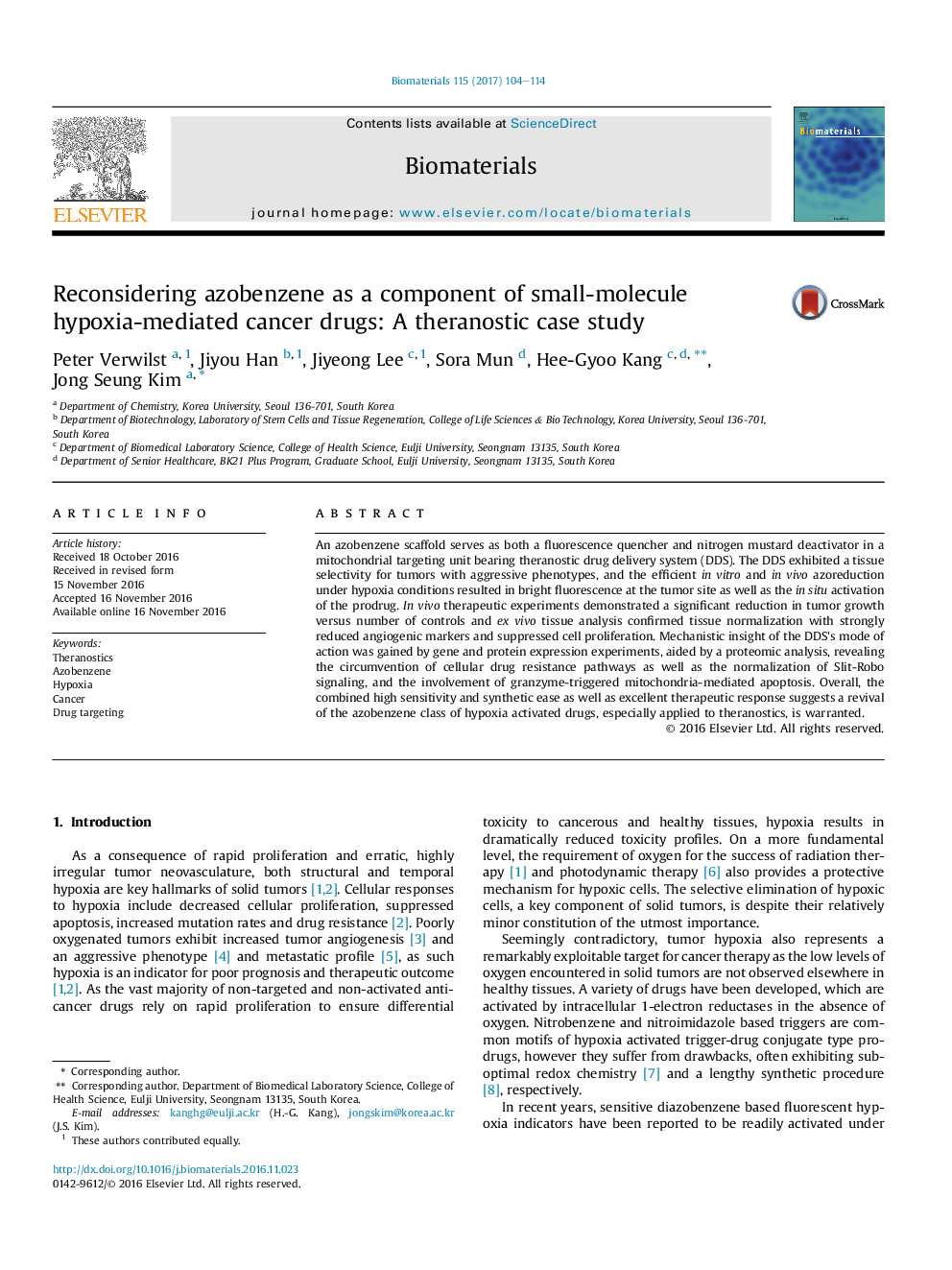| Article ID | Journal | Published Year | Pages | File Type |
|---|---|---|---|---|
| 6450934 | Biomaterials | 2017 | 11 Pages |
An azobenzene scaffold serves as both a fluorescence quencher and nitrogen mustard deactivator in a mitochondrial targeting unit bearing theranostic drug delivery system (DDS). The DDS exhibited a tissue selectivity for tumors with aggressive phenotypes, and the efficient in vitro and in vivo azoreduction under hypoxia conditions resulted in bright fluorescence at the tumor site as well as the in situ activation of the prodrug. In vivo therapeutic experiments demonstrated a significant reduction in tumor growth versus number of controls and ex vivo tissue analysis confirmed tissue normalization with strongly reduced angiogenic markers and suppressed cell proliferation. Mechanistic insight of the DDS's mode of action was gained by gene and protein expression experiments, aided by a proteomic analysis, revealing the circumvention of cellular drug resistance pathways as well as the normalization of Slit-Robo signaling, and the involvement of granzyme-triggered mitochondria-mediated apoptosis. Overall, the combined high sensitivity and synthetic ease as well as excellent therapeutic response suggests a revival of the azobenzene class of hypoxia activated drugs, especially applied to theranostics, is warranted.
Graphical abstractDownload high-res image (316KB)Download full-size image
